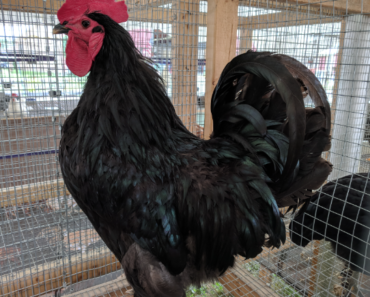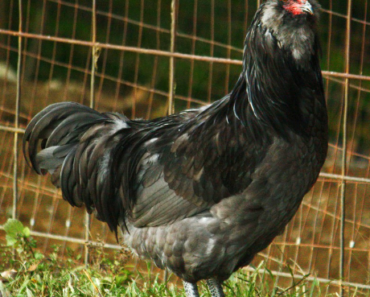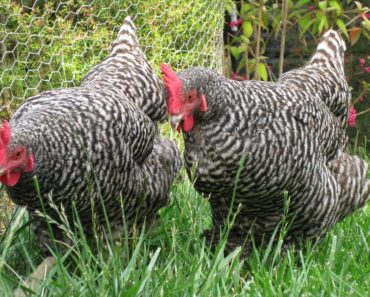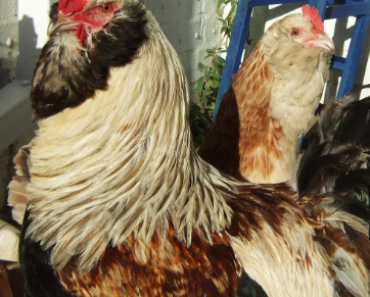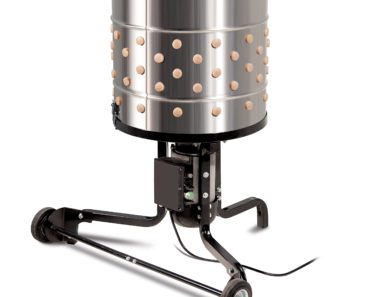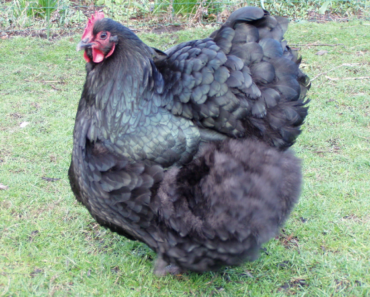Contents
- 1 The Leghorn Chicken: An Egg-cellent Addition to Your Flock
- 2 The History and Origins of Leghorn Chicken
- 3 Raising and Caring for Leghorn Chickens
- 4 Characteristics of Leghorn Chicken
- 5 Utilization of Leghorn Chicken
- 6 Leghorn Chickens in Backyard Flocks
- 7 FAQ
- 7.1 What are the unique characteristics of Leghorn chickens that make them a popular choice for egg-laying purposes?
- 7.2 How do Leghorn chickens handle different climates and environmental conditions compared to other chicken breeds?
- 7.3 Are there any specific health concerns or diseases that Leghorn chickens are more prone to, and how can they be prevented or treated?
- 7.4 How do Leghorn chickens compare to other chicken breeds in terms of egg production and quality?
- 7.5 Related Posts

The charismatic Leghorn chicken, a beloved breed renowned for its stunning appearance and remarkable egg-laying capabilities. Join us as we dive into the fascinating world of this iconic poultry, exploring its history, distinctive characteristics, and tips for raising these energetic and talkative birds. Embark on a clucking adventure with our comprehensive guide!
The Leghorn Chicken: An Egg-cellent Addition to Your Flock
If you’re looking to add a versatile and productive breed to your chicken flock, look no further than the Leghorn chicken. With its striking appearance and impressive egg-laying capabilities, the Leghorn is a popular choice among poultry enthusiasts.
The Leghorn chicken originated in Italy and was brought to the United States in the early 19th century. This breed is known for its distinctive upright carriage, elegant white feathers, and bright red comb and wattles. They come in different varieties, including the White Leghorn, Brown Leghorn, and Black Leghorn.
One of the main reasons why the Leghorn chicken is highly sought after is due to its exceptional egg-laying abilities. Leghorns are known to be incredibly prolific layers, producing a large number of white eggs throughout the year. In fact, they hold the record for the highest number of eggs laid by a single hen in a year, with some individuals surpassing 300 eggs!
Not only are Leghorns great egg producers, but they also have an active and alert nature, making them excellent foragers. They thrive in free-range environments where they can explore and find their own food. However, they can adapt well to confinement as long as they have ample space to move around.
Another advantage of keeping Leghorns is their ability to withstand various climates and temperatures. They have a hardy constitution and can tolerate heat and cold reasonably well. This makes them suitable for different regions and climates, making them a reliable choice for backyard chicken keepers.
Furthermore, Leghorns are known for their agile and flighty nature. They are great flyers and enjoy perching on high spots. If you have a secure chicken coop, make sure to provide enough roosting space to accommodate their natural inclination to perch.
The Leghorn chicken is an egg-cellent addition to any flock, thanks to its remarkable egg-laying abilities, adaptability to various climates, and distinctive appearance. Whether you’re a backyard enthusiast or a commercial farmer, the Leghorn chicken is definitely a breed worth considering for its productivity and charm.
The History and Origins of Leghorn Chicken
Origins: The Leghorn chicken, also known as Livorno chicken, is a breed that originated in Italy. It was first bred in the port city of Livorno in Tuscany during the 19th century. Leghorns were brought to the United States in the 1820s and gained popularity due to their exceptional egg-laying abilities.
Characteristics: Leghorns are known for their sleek appearance and slender bodies. They have white earlobes, which indicate that they lay white eggs. They come in various colors, including white, brown, black, and buff. Leghorns have prominent red combs and wattles and can have either single or rose combs.
Popularity and Commercial Use: Leghorn chickens are highly prized for their exceptional egg production. They are prolific layers, capable of producing upwards of 280 eggs per year. Due to their high productivity, Leghorns are commonly found on commercial farms. Additionally, Leghorns are known for their adaptability and tolerance to various climates, making them an ideal choice for poultry keepers worldwide.
Raising and Caring for Leghorn Chickens
Housing and Space Requirements: Leghorn chickens are active and energetic birds that require sufficient space to thrive. When raising Leghorns, it is important to provide them with a well-ventilated coop that protects them from predators. Each Leghorn should have at least 4 square feet of coop space and 8-10 square feet of outdoor space.
Nutrition and Feeding: Leghorns have high energy levels and require a balanced diet to support their egg-laying capabilities. A diet consisting of commercial poultry feed supplemented with fresh greens and occasional treats should be provided. It is important to monitor their calcium intake since Leghorns lay large, white eggs that require sufficient calcium levels.
Health and Disease Prevention: Like all chicken breeds, Leghorns are susceptible to common poultry diseases such as respiratory infections and parasites. Regular health checks, cleanliness, and proper biosecurity practices, including quarantining new birds, can help prevent the spread of diseases. Providing a stress-free environment, good ventilation, and clean drinking water are essential for maintaining the overall health of Leghorn chickens.
Characteristics of Leghorn Chicken
1. Egg Production: Leghorn chickens are renowned for their impressive egg-laying abilities. They consistently produce large quantities of white eggs, often outperforming other chicken breeds. Leghorns have a small body size, allowing them to allocate more energy towards laying eggs rather than growing in size.
2. Active and Hardy: Leghorn chickens are known for their lively and active nature. They have excellent foraging skills and can adapt well to various climates and environmental conditions. Their hardiness allows them to thrive in both free-range and confinement setups.
3. Variety of Colors: While most people associate Leghorn chickens with the classic white variety, they actually come in several color variations. Some common color variants include brown, black, buff, and silver. Each color variation has its own distinct beauty and charm.
Utilization of Leghorn Chicken
Leghorn chickens excel primarily as egg layers. Their high egg production makes them an ideal choice for commercial egg farming operations. Additionally, their small body size and active nature make them suitable for backyard flocks, where their strong foraging inclination contributes to a self-sustaining flock. While Leghorn meat is lean and flavorful, their primary value lies in their egg-laying capabilities rather than meat production.
Leghorn Chickens in Backyard Flocks
Backyard Egg Production: Leghorn chickens are popular choices for backyard flocks due to their exceptional egg-laying abilities. They are reliable layers that consistently produce large quantities of high-quality eggs. Their smaller size and active nature make them suitable for urban and suburban environments.
Temperament and Behavior: Leghorns are generally active, independent, and alert birds. They are known to be flighty and may not be as docile or friendly as some other chicken breeds. However, with proper socialization and handling from an early age, Leghorns can become more accustomed to human interaction and can be enjoyable additions to backyard flocks.
Integration with Other Breeds: Leghorns can be integrated successfully with other chicken breeds, although their energetic nature may sometimes cause initial conflicts during the pecking order establishment. Introducing new birds slowly, providing ample space, and ensuring an adequate number of food and water sources can help minimize any potential aggression or tension during the integration process.
FAQ
What are the unique characteristics of Leghorn chickens that make them a popular choice for egg-laying purposes?
Leghorn chickens are a popular choice for egg-laying purposes due to their unique characteristics.
High Egg Production: Leghorns are known for their exceptional egg production, laying around 250-300 large white eggs per year. They have a strong instinct for continuous egg-laying, making them highly efficient layers.
Efficiency: Leghorns are comparatively smaller in size, allowing them to consume less feed in proportion to the number of eggs they produce. This efficiency makes them cost-effective for commercial egg production.
Hardiness: Leghorns are hardy and adaptable birds that can tolerate a wide range of climates, from hot to cold. They are able to withstand temperature extremes, making them suitable for different geographic regions.
Alertness and Flightiness: Leghorns are known for their alertness and active nature. They are more flighty compared to other chicken breeds, which may make them challenging to handle or confine. However, their alertness helps them avoid predators and stay safe.
Low Maintenance: Due to their small size and efficient foraging abilities, Leghorns require relatively low maintenance compared to some other chicken breeds. They are robust and independent birds, requiring less attention and care.
Longevity: Leghorns have a longer productive lifespan compared to some other breeds, often laying for 3-4 years without significant decline in egg production. This makes them a valuable choice for sustained egg-laying over a longer period.
Overall, the unique combination of high egg production, efficiency, hardiness, alertness, low maintenance, and longevity makes Leghorns a popular choice for those looking to maximize egg production in a practical and cost-effective manner.
How do Leghorn chickens handle different climates and environmental conditions compared to other chicken breeds?
Leghorn chickens are known for their ability to handle a wide range of climates and environmental conditions. They are highly adaptable and can thrive in various climate zones, making them a popular breed in many parts of the world.
One of the reasons Leghorns are well-suited to different climates is their minimal feathering. They have less feathers compared to other breeds, which helps them stay cool in hot climates. This characteristic also makes them more resistant to heat-related health issues like heat stress or heat stroke.
In cold climates, Leghorns may require additional protection. Their limited feathering means they have less insulation against the cold. Providing them with a well-insulated coop and a heat source during colder months can help them stay comfortable. Their active nature also helps them generate body warmth through physical activity.
Another advantage of Leghorns is their hardiness. They are generally healthy and robust birds, able to withstand various environmental challenges such as extreme temperatures, humidity, and changes in altitude. This resilient nature allows them to adapt well to different climates and continue to lay eggs consistently.
Overall, Leghorn chickens are versatile when it comes to handling different climates and environmental conditions. Whether it’s hot or cold, they have characteristics that enable them to thrive and produce eggs efficiently.
Are there any specific health concerns or diseases that Leghorn chickens are more prone to, and how can they be prevented or treated?
Leghorn chickens are a popular breed known for their egg-laying abilities. While they are generally healthy birds, there are a few health concerns and diseases specific to Leghorns that owners should be aware of.
One common health issue in Leghorns is egg binding, where a hen is unable to pass an egg. This condition can be caused by various factors such as nutritional imbalances, genetics, or even stress. Providing a diet rich in calcium and ensuring proper nesting conditions can help prevent egg binding. If a hen is showing symptoms such as lethargy, straining, or a swollen abdomen, it is important to seek veterinary assistance.
Another concern for Leghorns is vent gleet or cloacitis, which is an inflammation or infection of the vent area. This condition is often caused by poor sanitation or a compromised immune system. Regularly cleaning the coop, promoting good hygiene practices, and providing a balanced diet can help prevent vent gleet. Treatment typically involves cleaning the affected area and administering appropriate medications prescribed by a veterinarian.
Marek’s disease is a viral disease that affects chickens, including Leghorns. It is characterized by tumors, paralysis, and neurological symptoms. Unfortunately, there is no cure for Marek’s disease, but vaccination at an early age can help prevent its onset.
To ensure overall health and well-being, it is crucial to provide Leghorns with a proper diet, clean living conditions, access to fresh water, and regular veterinary check-ups. Good biosecurity measures, such as limiting contact with other flocks and practicing quarantine protocols for new birds, can also help prevent the spread of diseases.
Remember to always consult a veterinarian for proper diagnosis, treatment, and advice regarding the specific health concerns of your Leghorn chickens.
How do Leghorn chickens compare to other chicken breeds in terms of egg production and quality?
Leghorn chickens are highly regarded for their exceptional egg production and high-quality eggs. They are considered to be one of the most prolific egg-laying breeds available. On average, a Leghorn hen can lay around 250-300 large white eggs per year.
Compared to other chicken breeds, Leghorns have a reputation for being extremely efficient layers. Their ability to consistently produce a large number of eggs makes them popular with commercial egg producers. In terms of egg quality, Leghorn eggs are known for their strong shells and excellent internal characteristics, such as a rich yolk color and a firm albumen.
However, it’s important to note that Leghorns are primarily bred for their egg-laying abilities rather than meat production. Consequently, they tend to have smaller body sizes and less meat compared to dual-purpose or meat-oriented breeds.
Leghorn chickens stand out for their impressive egg production, consistently delivering large quantities of high-quality eggs.
The Leghorn chicken stands out as a remarkable breed in the world of chickens. With their distinctive appearance and excellent egg-laying abilities, Leghorns have become widely popular among poultry farmers and backyard enthusiasts alike. Their elegant physique, characterized by a slender body and elongated neck, coupled with their high energy levels, make them not only efficient layers but also great foragers. Whether you are looking to boost your farm’s egg production or simply adding some visual appeal to your flock, the Leghorn chicken is undeniably a top choice. So don’t hesitate to consider adding these marvelous birds to your poultry collection!

